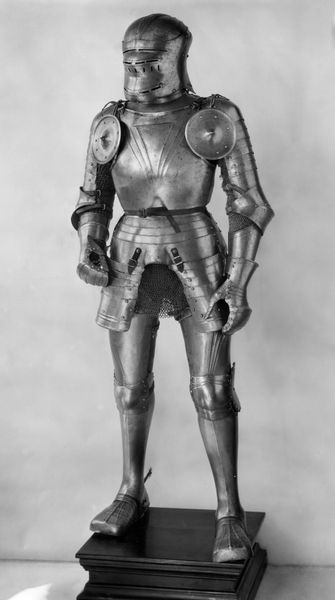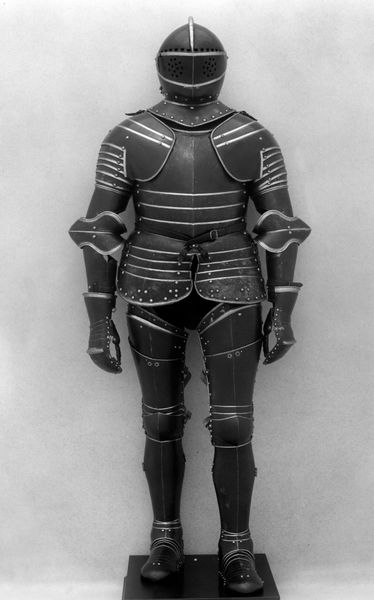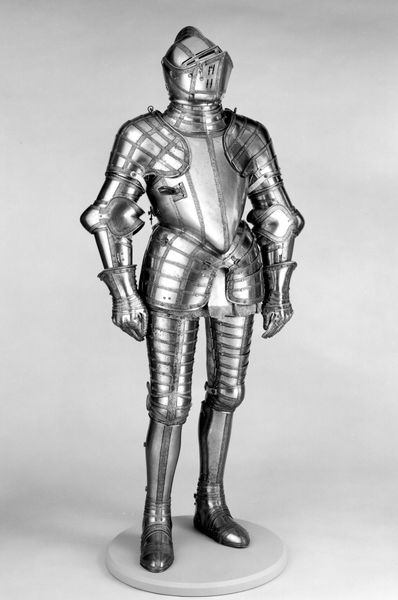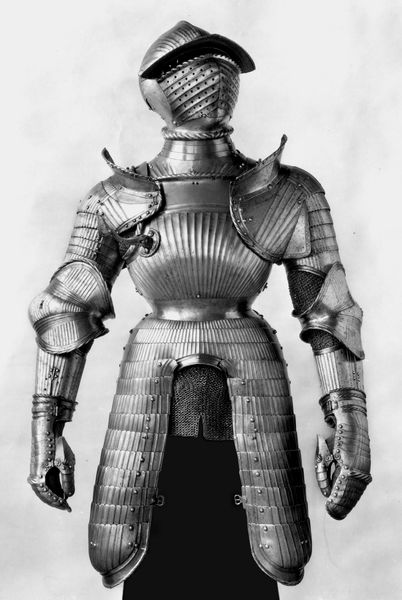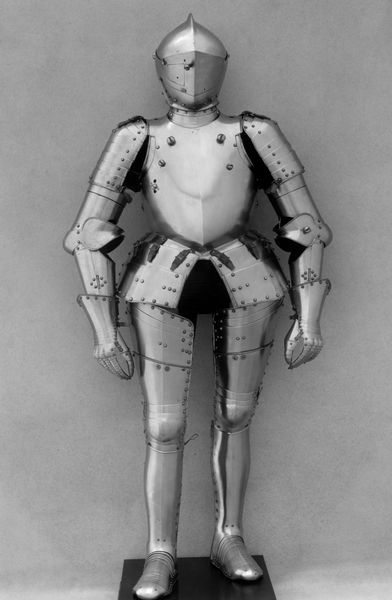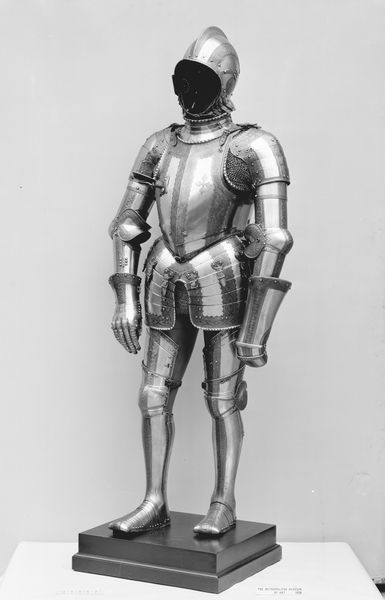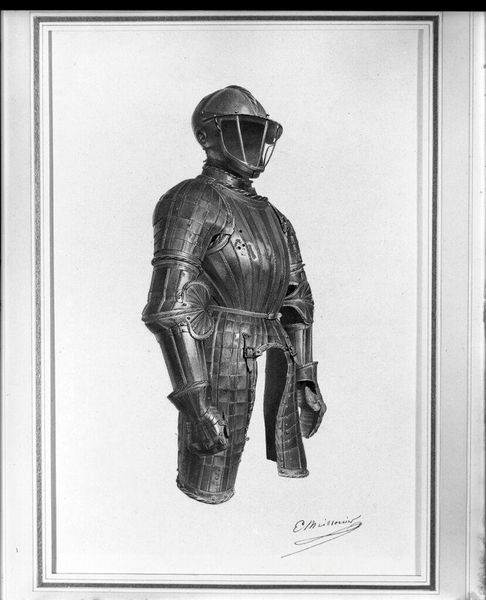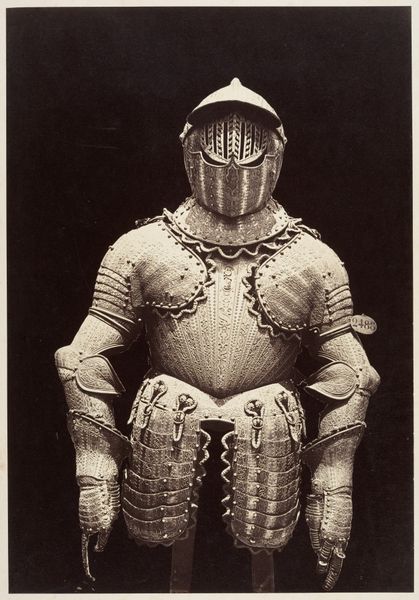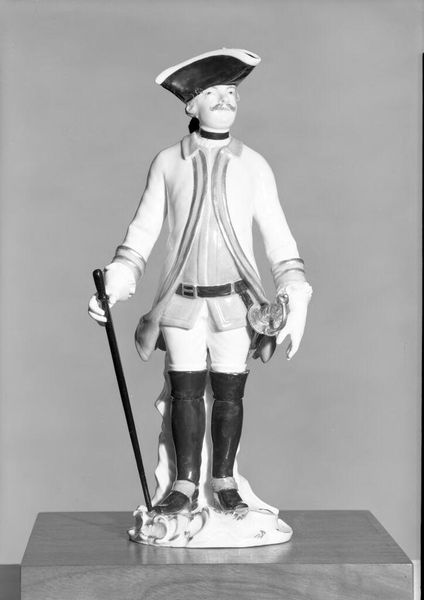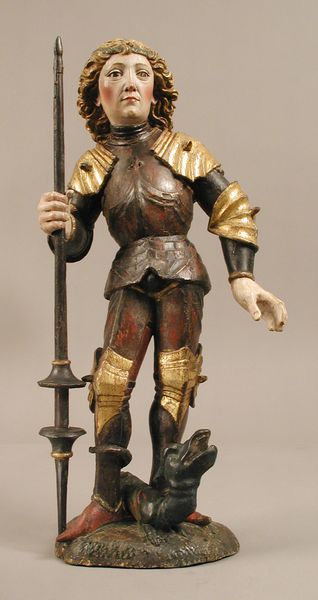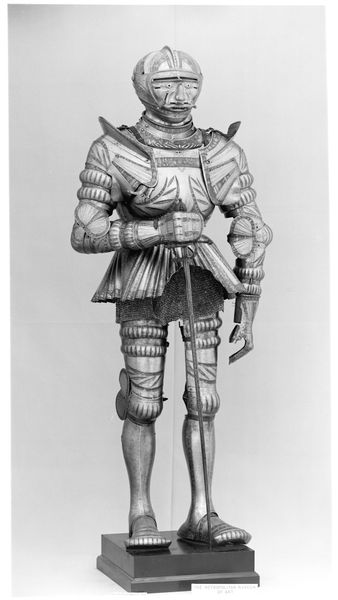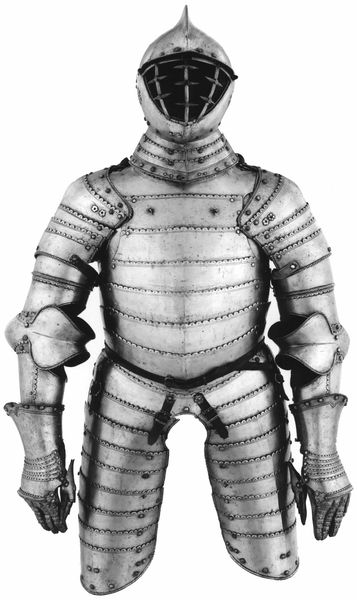
bronze, sculpture
#
narrative-art
#
sculpture
#
bronze
#
figuration
#
ancient-mediterranean
#
sculpture
#
black and white
#
history-painting
Copyright: Public domain
Editor: Here we have Jean-Léon Gérôme's bronze sculpture, "The Gladiators." The figure looms, one foot planted triumphantly on his defeated opponent. The scene is striking and honestly, a little unsettling. What symbols or deeper meanings do you see in this work? Curator: The enduring symbol of the gladiator touches upon core anxieties and fascinations in western culture – power, violence, spectacle, and mortality. Gérôme keenly understood how classical imagery could be imbued with new significance for a modern audience. Look at the victorious gladiator's pose – his upward gaze, the subtle contrapposto. Doesn't it remind you of a hero in ancient Greek sculpture? Editor: I see what you mean, there is definitely a deliberate heroism to his stance. Does it romanticize violence then? Curator: Perhaps not romanticize, but acknowledge its role. The gladiator as a figure embodies societal tensions surrounding strength, control, and submission. His placement over the vanquished fighter—it is reminiscent of classical victory monuments and recalls not only power but also ephemerality: All empires rise and eventually fall. The visual symbol creates an emotional association. Can you see it? Editor: Yes, it becomes quite apparent. Thinking about it, is that perhaps why this subject is continually revisited in art and popular culture even today? Curator: Exactly. Images possess incredible staying power. They trigger something deep in the human psyche. What has endured from this sculpture for you? Editor: I’d say it is that complicated blend of triumph and underlying vulnerability that continues to echo through the ages. It certainly moved me to look past the immediate action. Curator: Indeed. Symbols remind us of continuities, and also the constant reimagining of ourselves.
Comments
No comments
Be the first to comment and join the conversation on the ultimate creative platform.
